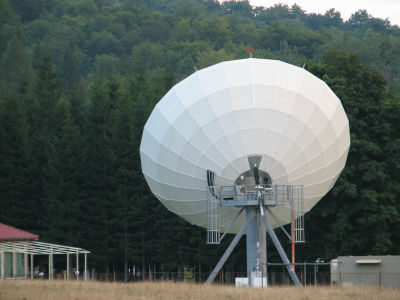Radiation science organization announces views on 5G health hazards

5G (5th generation mobile communication systems) compatible terminals are appearing one after another, and their realization is on the verge of being realized, while discussions on the issues that will arise in the realization of 5G continue. Meanwhile, electromagnetic waves Exposure The guidelines on dew restrictions have been updated to indicate that there is no health problem with 5G.
ICNIRP
5G confirmed safe by radiation watchdog | Technology | The Guardian
https://www.theguardian.com/technology/2020/mar/12/5g-safe-radiation-watchdog-health

5G, the next-generation communication standard, claims high speed, large capacity, low delay, many simultaneous connections compared to conventional wireless communication, but there is concern that 'the weather forecast accuracy may decrease by 30% ' There are a number of arguments involved in achieving this. One of the concerns is the use of high frequency band ' millimeter waves '. 5G uses millimeter waves with a wavelength of 1-10 mm and a frequency of 30-300 GHz in addition to conventional microwaves from 2G to 4G, but short-term exposure to millimeter waves has It can have deleterious physiological effects on the cardiovascular system, 'said some researchers. In addition, millimeter waves have poor reliability in long-distance communication, so a large number of small access points must be installed. Concerns about these health risks were raised.
Experts warn about the effect of 5G electromagnetic waves on the human body-gigazine

Under these circumstances, the German-based non-profit scientific organization The International Commission on Non-Ionizing Radiation Protection (ICNIRP) newly established a radio-frequency electromagnetic field established in 1998. Updated guidelines on exposure protection, stating that there is no undue health risk if 5G adheres to standards.
ICNIRP is an independent organization that provides scientific advice and guidance on protecting people and the environment from harmful non-ionizing radiation . To update this guidance, ICNIRP has been conducting research for 5 years on protection from 5G as well as existing technologies such as medium-wave broadcasting , DAB , Wi-Fi, Bluetooth, 3G and 4G.
'We understand that some communities are concerned about the safety of 5G. We hope the updated guidelines can help reassure people,' said ICNIRP Chair Eric van Rongen. Guidelines have been developed following relevant scientific papers, scientific workshops, and extensive public comment.5G technology protects against the adverse scientific effects of exposure to frequencies from 100 kHz to 300 GHz. I do. '

The major changes in the 2020 guidelines relating to 5G exposure are for frequencies above 6GHz. Connections in the 5G and 6GHz bands using millimeter waves were not expected in 1998 when the guidelines were announced.
Dr. Jack Rowley, director of the GSMA , a mobile telecommunications industry association, said in a renewed guideline, 'Most importantly, the underlying health risks have not changed (even assuming millimeter waves). The restrictions made still provide protection. '
Related Posts:
in Mobile, Posted by darkhorse_log






